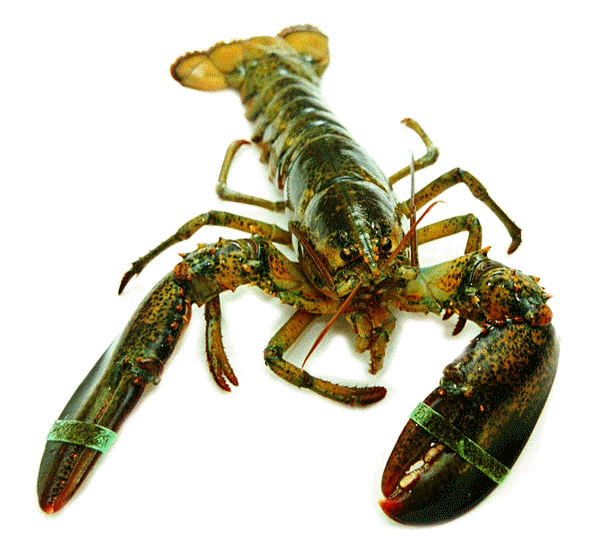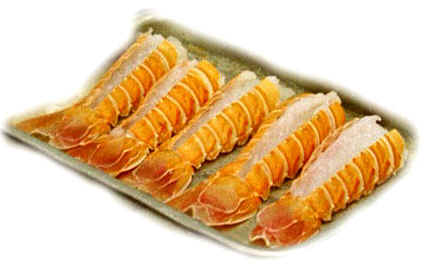|
|
|
|
Accepted universally as the king of shellfish, the clawed lobster has many close relatives which are always in high demand. The North Atlantic lobster is recognized for its larger, fleshier claws and wider tail than its cousins. The Mediterranean lobster or Spiny lobster is often called Rock lobster, crawfish or Langoustine with its brownish-pink color. The Locust, Slipper or Flat lobster with a broad, flat
body, has less meat than the Spiny lobster. Found in the Mediterranean,
long the Atlantic coast
The North Atlantic clawed lobster tends to have a sweeter taste than that of the Spiny lobster. Both may weigh as much as 10 pounds or more, but most are commercially sold from 1 to 4 pounds. All lobsters, those with claws (the Atlantic or Maine lobster) and those without claws (the crayfish, the spiny lobster, the rock lobsters and the Danish Langoustine) must be alive when cooked. If one does not have the facilities to keep lobsters alive, he should buy those that are already cooked, either fresh or frozen. Problems: Must be carefully handled, spoil quickly, become tough and chewy if over- cooked.
|
|
|
|
|


 of America, and Europe, they are related to the Australian flathead locust
lobster, also known as the Moretown Bay Bug. Because of the demand, many
countries impose limits on the size and number of lobsters which may be
caught.
of America, and Europe, they are related to the Australian flathead locust
lobster, also known as the Moretown Bay Bug. Because of the demand, many
countries impose limits on the size and number of lobsters which may be
caught.